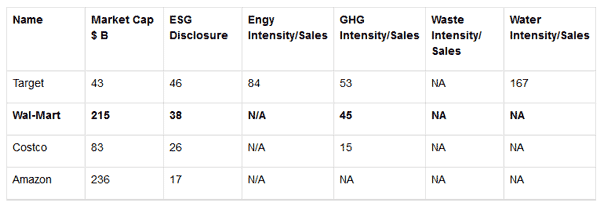Among the many impacts of the sustainability and Green supply chain movements is the growing need for public and even some private companies to report their progress – or lack thereof – in these areas.
In its predications for chief supply chain officers for 2016, the analysts at Gartner wrote that "By 2019, global, publicly held manufacturers and retailers will double the amount of content dedicated to explaining supply-chain-organization-based environmental, social and corporate governance (ESG)-related risks in their annual reports."
This is part of what is emerging as a major supply chain megatrend. Consider that:
• Gartner notes that that the world's largest institutional investors are publicly discussing their strategies for incorporating ESG factors into investment decisions
• Bloomberg has reported that customer use of ESG data in its network of proprietary trading terminals grew by 76% in 2014.
• The non-profit Sustainability Accounting Standards Board (SASB) launched a high-visibility campaign to incorporate a standard set of "non-financial" industry-specific performance indicators into the US Security and Exchange Commission's 10-K filings.
• Stock exchanges worldwide are uniting to pressure listed companies to make more sustainability-related information available to investors.
• EU member states have until December 2016 to create national legislation that requires companies to disclose non-financial and diversity information.
We are starting to see this manifest itself in many ways. A growing number of companies voluntarily release key ESG data through annual reports, 10-K filings, and sustainability reports. Since 2009, corporate ESG data has been available through the Bloomberg Professional Service and other financial service platforms.
This makes for some interesting analysis. For example, the Bloomberg service actually rates companies on their level of ESG disclosure on a 0 (no disclosure) to 100 (full disclosure) scale.
On the popular investment web site SeekingAlpha, analyst Katherine Schrank recently looked at those Bloomberg disclosure ratings and other Green supply chain related metrics across four large retailers, as shown in the table below.
Green Supply Chain Reporting by Leading Retailers

Source: SeekingAlpha, from Bloomberg Data
All four retailers have Bloomberg disclosure ratings of below 50, from 46 at Target to just 17 at Amazon.com. Bloomberg was also unable to determine other metrics, such as energy or water usage intensity (relative to sales) for most categories and retailers, with again Target being something of an exception.
To consider where this thinking is headed, Shrank observes that "Investors concerned about climate change are likely interested in how much total energy Walmart uses as an enterprise, and what percentage of that total constitutes renewable energy."
She notes that Walmart's 2015 sustainability report stated that by Dec. 31, 2020, the company plans to reduce the total kWh-per-square-foot energy intensity required to power its buildings around the world by 20% compared to its 2010 baseline.
"But unless Walmart discloses its year to total energy usage, and its renewable energy usage, its goal for 2020 is not transparent and verifiable," Schrank writes.
So this really will be a whole new world. The UK's Carbon Disclosure Project largely got is start by corralling a large group of investment firms and having them declare their interest in seeing CO2 emissions data and carbon risks for publicly traded companies and their supply chains. (See Latest Report from the Carbon Disclosure Project Sees Progress in Supply Chain CO2 Emissions, but Not Fast Enough.) That pressure fro other sources is now growing dramatically.
Shrank then drills down some more on Walmart specifically, offering the following data table, which shows that Walmart's total GHG emissions from its store and distribution centers steadily increased between the years 2006 and 2013, from 18,900 thousand metric tons of GHG in 2006 to 21,200 thousand metric tons of GHG in 2013.
Walmart's GHG Emissions in Total and Versus Sales

But the key insight from the table, Schrank says, is that while Walmart's GHG emissions were steadily increasing, the metrics suggest that the enterprise continually reduced GHG emissions as a percentage of sales.
To show you how some on Wall Street may be thinking, Schrank adds that "As a general rule, a pattern of reduced environmental intensity metrics tied to a pattern shows that the enterprise is gaining in efficiency, which supports reduced costs, reduced risks, and contributes to greater and sustainable profits."
In other words, she is making a direct link to ESG data and the bottom line. Does such a link really exist? Certainly many believe so, but we would say the jury is still out lacking enough data.
So we are in a whole new world. The link between traditional supply chain excellence and the bottom line is increasingly obvious, but how the Green supply chain and shareholder value are linked remains a subject of huge import. The only thing that can be said for sure is that the level of reporting and disclosure will do nothing but increase, creating a very interesting new dynamic.
How big an impact do you expect ESG reporting to be? Any issues with this trend? Let us know your thoughts at the Feedback button below.

|